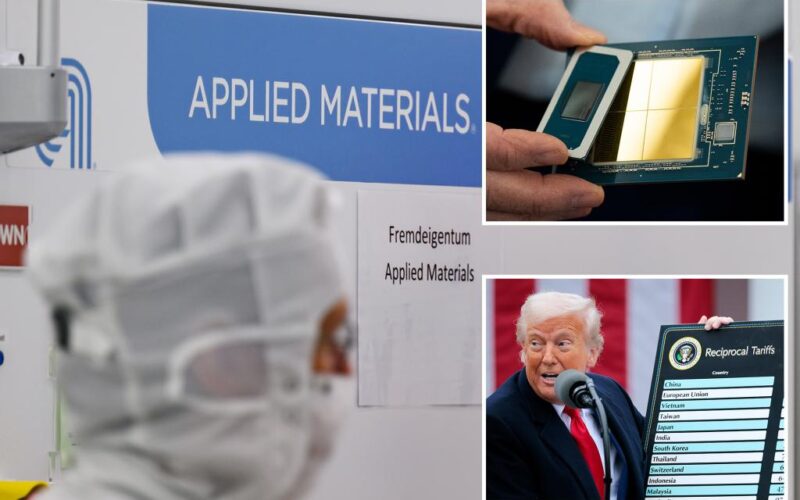President Trump’s new tariffs could cost U.S. semiconductor equipment makers more than $1 billion a year, according to industry calculations discussed with officials and lawmakers in Washington last week, two sources familiar with the matter said.
Each of the three largest U.S. chip equipment makers — Applied Materials, Lam Research and KLA — may suffer a loss of roughly $350 million over a year related to the tariffs, the sources said. Smaller rivals such as Onto Innovation may also face tens of millions of dollars in extra spending.
The potential billion-dollar cost to the chip equipment industry and talks between industry executives and U.S. officials over several days about those costs are reported here for the first time.
The companies build some of the world’s most highly sought-after chipmaking equipment that can require thousands of specialized parts.
Chip equipment makers have already lost billions in revenue after then-President Biden implemented a series of export controls aimed at curbing the shipment of advanced semiconductor manufacturing equipment to Chinese entities.
The Trump administration has largely paused the reciprocal tariffs it announced in April. But to spur more U.S. manufacturing, it is weighing further duties on the chip industry and initiated a probe into their imports on Monday.
The estimated costs discussed last week in Washington include lost revenue, primarily for missed sales of less sophisticated equipment to overseas rivals, and the costs of finding and using alternative suppliers for the complex components of chipmaking tools. The estimate also includes tariff compliance costs, such as adding personnel to handle the complexities of following the rules.
Lawmakers and administration officials discussed the tariff costs with chip industry executives and officials from SEMI, an international trade group, as part of an ongoing dialog.
Applied did not respond to a request for comment. KLA and Lam declined to comment.
The early, rough estimate of $350 million per company could change as the Trump administration’s duties take effect. Quick calculations are hard to make because each chipmaking tool has multiple components, and the ultimate tariff regime is unclear.
The Biden administration cracked down on China’s chip industry over three years to hobble its ability to produce cutting-edge chips used in artificial intelligence, military applications or other ways that could threaten U.S. national security.
The U.S. export controls have spurred China to invest in its domestic chip equipment industry.







